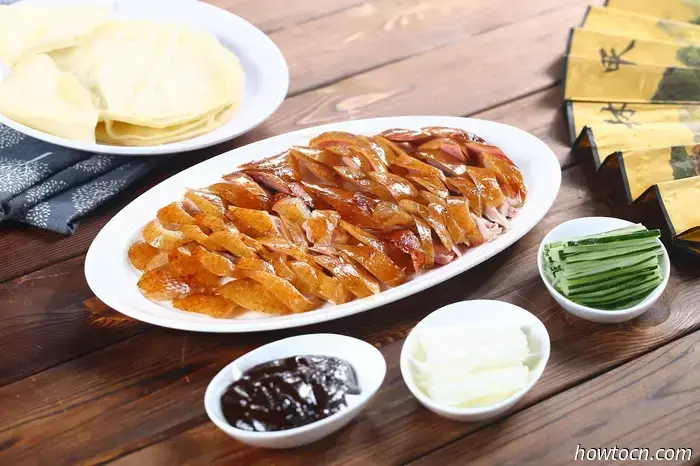
One of the most appealing features of expat life in Beijing is the convenient access to various Asian cities and the numerous public holidays that provide opportunities for exploration. If you find yourself in one of these countries during Chinese New Year or are simply interested in how Lunar New Year is observed elsewhere in Asia, here’s a glimpse into some regional traditions.
Thailand
Thailand attracts many visitors this time of year as it offers a respite from the chilly Beijing winter. If you plan to enjoy the beaches of Phuket during your holiday, you might be intrigued to learn that Thais refer to their celebration as Trut Chin. This involves savoring kanom keng, a sticky rice cake served in banana leaf cups, and burning silver and gold paper as a means to wish for a prosperous new year. Although the iconic floating lanterns are typically associated with the November festival of Khomi Loi, you may still spot some hopeful individuals releasing these beautiful lights alongside traditional fireworks.
Cambodia
In Cambodia, the Lunar New Year celebration, called Chaul Chnam Thmey, is heavily influenced by Chinese customs, which means you’ll find many dragon dances and lanterns, as well as fairs held at iconic Cambodian temples that continue into the evening. Street vendors offer a variety of food, including Num Kom, a sweet sticky coconut rice wrapped in banana leaves, with some being used as offerings at altars.
Vietnam
Vietnam's celebration lasts for 12 days and is known as Tet. The Quang Ba Flower Market in Hanoi serves as an excellent spot to witness Tet preparations, with families rushing to buy branches of peach blossoms and Kumquats for their homes, as well as goldfish to release into streams to invoke the kitchen god's favor. Herbal baths are also available as a purification ritual to remove bad luck from the previous year. On the final day of Tet, called Hoá Vàng, expect lively celebrations and small fires as all paper and food offerings placed on altars during the festival are burned to honor the ancestors.
Korea
In Korea, the Lunar New Year is known as Seollal. Similar to the Chinese tradition, it is a time for family gatherings and honoring ancestors. Besides feasting and making offerings at temples, many people seek to have their saju (fortune) read. Other customs include staying awake to witness the first sunrise for good luck and flying kites as a symbolic act of releasing worries and embracing hope for the new year.
Malaysia
In Malaysia, a distinctive custom involves tossing Yee Sang (Prosperity Salad), which is a vibrant mix made with raw fish to symbolize abundance, along with fruits and vegetables like carrots or oranges for prosperity, and plum sauce representing the sweet aspects of life. Families come together to use their chopsticks to toss the salad high while voicing their wishes. If you want to experience this in Beijing, Mulu is hosting a special Yee Sang brunch during Chinese New Year, with more details available here.
Japan
Japan no longer officially celebrates Lunar New Year as a public holiday, but some communities continue to observe Koshogatsu or the Little New Year. True to its name, this is a more understated event, involving the making and gifting of Mochi as a treat, alongside a quiet family meal where they reflect on hopes for the future.
Asia is incredibly diverse, and we are undoubtedly missing several Lunar New Year traditions. Please feel free to share any we haven't included in the comments! Regardless of where or with whom you are celebrating, we wish you a joyful and restful holiday with loved ones and a prosperous year ahead! 新年快乐 xīnnián kuàilè!
READ: Try Making Dumplings This CNY With These Recipes
Images: Wikimedia Commons






.jpg)
Have you detected a gag-reflex-inducing, sulfurous, sewer-like odor coming from the bathroom in your Chinese apartment?

Longtime Hainan resident Nicki Johnson pays tribute to the island that has influenced her life.

Prior to the Lunar New Year of 2022, a video surfaced on Chinese social media showing a woman chained by her neck to a wall. The incident involving Little Plum Blossom has resonated across China in a manner that earlier human trafficking cases have not.
-Politics-in-Command-Xi-Jinpings-July-Visit-to-Xinjiang-The-China-Story.jpg)
Xi Jinping, the leading figure of the People's Republic of China (PRC), conducted a four-day 'investigative tour' of eastern Xinjiang in mid-July—marking his first visit to the Uyghur Region since 2014. At first glance, the trip and its public narrative seem similar to those of his predecessors. However, the ideological emphasis of Xi's comments during the visit centered on a historical account showcasing an innate sense of Zhonghuaness, where Uyghurs, Kyrgyz, Kazakhs, and other indigenous peoples of Xinjiang were included from the outset. This narrative is notably inclusive, minimizing non-Han ethnic identities not by rejecting them, but by subsuming them into a broader, constructed category. In essence, Xi’s interpretation of Zhonghua-ism has harnessed the notion of a collective identity for colonial objectives, emphasizing a shared history, common territory, and a sense of unity expressed through 'root veins.'

To celebrate the Lunar New Year, we reached out to influential figures in the capital to find out how they would spend 24 hours in Beijing.

Beginning at the Great Wall and concluding with a nightcap at a bar with views of the Forbidden City, Preston Thomas' 24 hours in Beijing are filled with a diverse range of experiences.
Here’s an overview of how the Lunar New Year is celebrated in other countries.